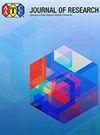Low Temperature Bleaching of Jute Using Peracetic Acid: A Novel Process
IF 1.2
4区 工程技术
Q4 MATERIALS SCIENCE, TEXTILES
引用次数: 0
Abstract
Jute, a natural golden fibre, is renewable and widely available and mostly used for the packaging of agricultural crops and commodities in the form of sack bag. However, over a period of time it has secured its own market in the field of home textiles and other lifestyle products due to its ethnic colour, good strength and biodegradable properties. Recently, jute has also been used in apparel products, particularly meant for outer and winter garments. Bleaching of jute has thus become an essential operation for making a white glossy fabric, that is, the base material to be used for subsequent coloration. The conventional hot hydrogen peroxide bleaching process produces good white fibre with a high loss in tensile strength. The present peracetic acid bleaching of scoured jute produces a satisfactory whiteness index of 65.8–77.7 with minimum loss of bundle strength. The peracetic acid bleached jute fibre could retain 85% of its bundle strength, when the bleaching was carried out at 70°C with 20 g/l peracetic acid for 120 min. A satisfactory whiteness index of 77 (Hunter scale) can be achieved incurring a low weight loss of <4.2 using the optimized recipe. The peracetic acid bleaching process may be considered as energy efficient and environment friendly, as the process is carried out at a near neutral pH of 7.5–8 and lower temperature of 50–70°C, in comparison to the 85–90°C and pH level of 11–11.5 (highly alkaline) normally used in hydrogen peroxide bleaching. The changes in physical, morphological and chemical properties after the peracetic acid bleaching of jute at optimized conditions were evaluated in detail.过乙酸低温漂白黄麻的新工艺
黄麻是一种可再生的天然黄金纤维,可广泛使用,主要用于农作物和商品的包装袋包装。然而,随着时间的推移,由于其民族色彩,良好的强度和可生物降解的特性,它在家纺和其他生活用品领域占据了自己的市场。最近,黄麻也被用于服装产品,特别是用于外衣和冬季服装。因此,黄麻的漂白已成为制作白色光泽织物的基本工序,即用于后续着色的基料。传统的双氧水热漂白工艺可产生良好的白色纤维,但拉伸强度损失大。经过氧乙酸漂白后的黄麻白度指数为65.8 ~ 77.7,且束强损失最小。在过氧乙酸浓度为20 g/l的条件下,在70℃条件下漂白120 min,经过过氧乙酸漂白后的黄麻纤维可保持85%的束强,白度指数达到77(亨特标度),且失重率<4.2。过氧乙酸漂白过程可以被认为是节能和环保的,因为该过程在接近中性的pH值为7.5-8,温度为50-70°C,而过氧化氢漂白通常使用85-90°C, pH值为11-11.5(高碱性)。详细评价了优化条件下黄麻过氧乙酸漂白后的物理、形态和化学性质的变化。
本文章由计算机程序翻译,如有差异,请以英文原文为准。
求助全文
约1分钟内获得全文
求助全文
来源期刊

AATCC Journal of Research
MATERIALS SCIENCE, TEXTILES-
CiteScore
1.30
自引率
0.00%
发文量
34
期刊介绍:
AATCC Journal of Research. This textile research journal has a broad scope: from advanced materials, fibers, and textile and polymer chemistry, to color science, apparel design, and sustainability.
Now indexed by Science Citation Index Extended (SCIE) and discoverable in the Clarivate Analytics Web of Science Core Collection! The Journal’s impact factor is available in Journal Citation Reports.
 求助内容:
求助内容: 应助结果提醒方式:
应助结果提醒方式:


